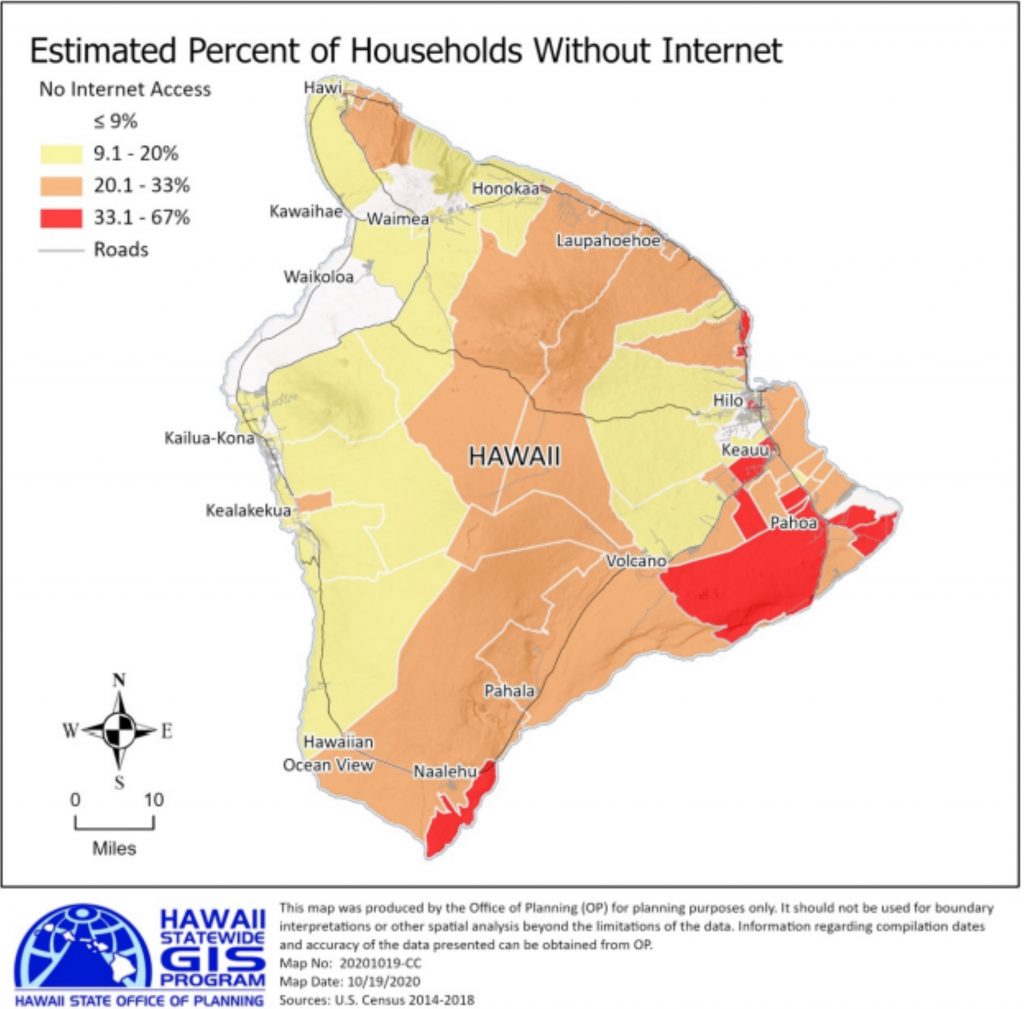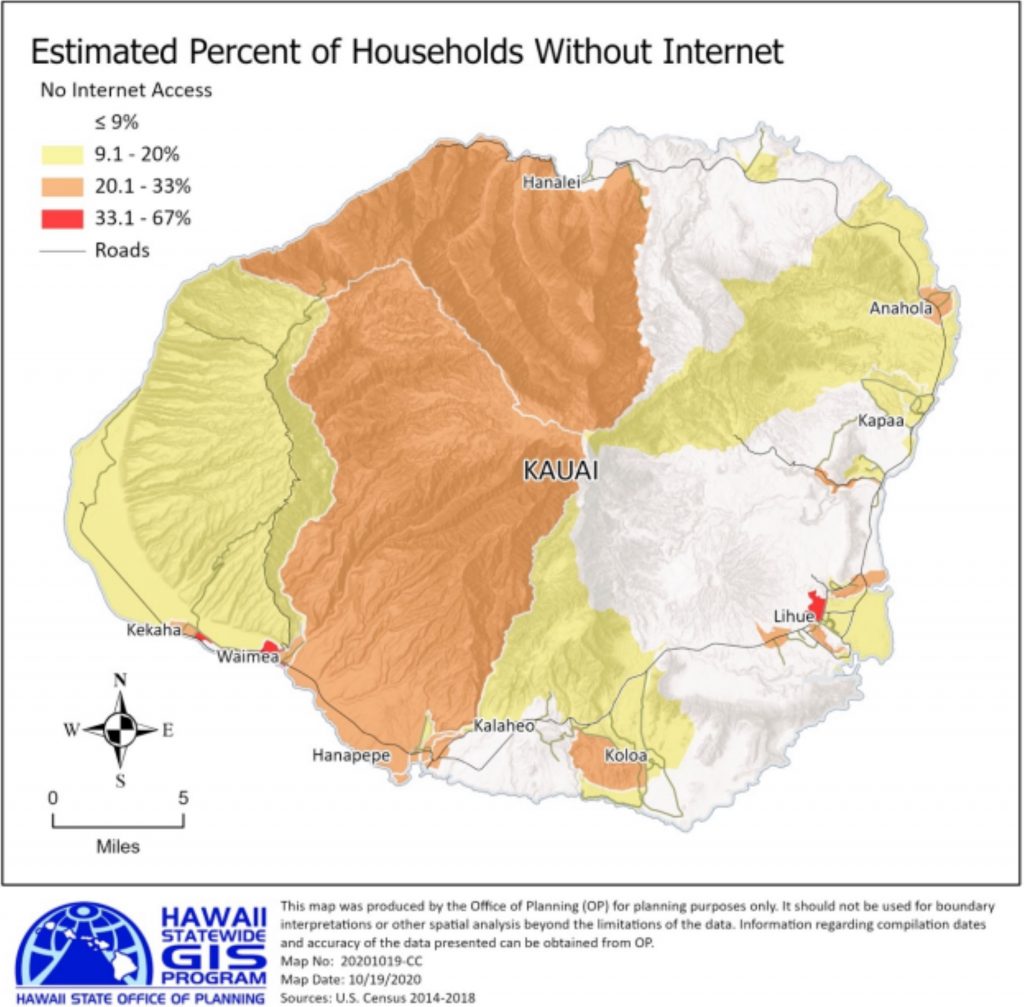‘Our generation’s big infrastructure moment’: Feds push ‘Pay’ on $149.5M to get Hawai‘i 100% internet connected
Hawai‘i is about to go from waiting for a connection to racing down the virtual highway after the federal government pushed “Pay” for a plan to close the digital divide and ensure everyone in the state has affordable, reliable, high-speed internet access.

The approval of the state’s initial proposal for the Broadband Equity, Access and Deployment, or BEAD, program by the U.S. Department of Commerce’s National Telecommunications and Information Administration means Hawai‘i can now move forward with infrastructure projects to connect unserved and underserved locations to the internet.
To do that, the program allots $149.5 million in federal funding the state can now access to deploy or upgrade high-speed internet networks throughout the islands.
All states submitted their initial proposals by December 2023.
The funds come from the Internet for All initiative, which provides a total of $65 billion from the Bipartisan Infrastructure Law to expand high-speed internet access in communities throughout the United States.
The BEAD program is a $42.45 billion state grant program that is also part of the federal infrastructure law.
The goal is to get 100% of Hawai‘i households and small businesses connected to high-speed broadband internet.
There are 11,924 unserved and underserved homes and small businesses statewide, according to data published in June by the National Broadband Availability Map.
On the Big Island, that includes 7,970 unserved and 295 underserved homes and businesses. On Kaua‘i, there are 691 unserved and 8 underserved residences and small companies.
Hawai‘i County with its total of 8,265 unserved and underserved locations tops the state in lacking broadband connectivity. A map included in the October 2020 edition of the Hawai‘i Broadband Strategic Plan shows a majority of those residences and businesses are in the Puna District.
Maui comes in second with a total of 1,539, and Kaua‘i is third with a total of 699 unserved and underserved homes and small businesses.
“The internet is now the essential tool for communication in our modern world,” said Alan Davidson, assistant secretary of commerce for communications and information and National Telecommunications and Information Administration administrator, during a press conference Tuesday morning announcing the approval of the state’s initial plan and next steps. “It’s essential for access to education, access to jobs, economic opportunity, access to health care, and this country has been talking about the digital divide for over 25 years.”
Lt. Gov. Sylvia Luke, who is leading the state’s Connect Kākou broadband initiative, said the COVID-19 pandemic made people realize that internet service and connectivity have transitioned from something just nice to have to a necessity.
“It’s something that we must have,” said the lieutenant governor during the press conference. “Just in the last few days, we’ve had wildfires on many of the different islands, and the first thing that comes up to people’s minds is how do we get communication out? Communication is not something that can be done without connectivity. Connectivity to the internet, connectivity to your phones, connectivity to what is going on around our neighborhoods and around our area.”
Connect Kākou is a collaboration between the Hawaiʻi Broadband and Digital Equity Office, University of Hawaiʻi, Department of Hawaiian Home Lands and several other state and county agencies.
Luke said the project is unlike anything the state has done before, and while the federal government has invested about a half-billion dollars through the years for various internet connectivity initiatives, this is the first time Hawai‘i has been able to get this kind of money for a broadband expansion and infrastructure capital initiative.
She called the $149.5 million funding approval unprecedented.
As an island state, Hawai‘i is unique. It has to make sure each island is connected to each other first even before thinking about being 100% connected to the mainland and the rest of the world.

The undersea cable that connects the islands and much of the infrastructure already in place is aging, so the funds through the Internet for All program will be important for ensuring redundancy and reliability while expanding connectivity.
The project will focus first on locations that traditionally have been historically difficult — or very expensive — to connect, many of which are in very rural areas. That includes Department of Hawaiian Home Lands locations.
The project will issue requests for proposals for providers statewide simultaneously, including the Big Island and Kaua‘i, and pursue contractors by county.
Individual timing will depend on how much work providers have to do to build in services, but construction also will be done on a statewide basis, with no one project expected to start before another.
Once the contractors are identified, the intent is to move as quickly as possible. If all goes as planned, the state hopes to get construction underway by the last half of 2025 or early 2026.
After deployment goals are met, any remaining funds will be available for training, workforce development efforts and other eligible uses.
A year from now, Hawai‘i will submit a final proposal detailing, among other data, the outcome of the project and how it will ensure continued universal broadband internet coverage.
Davidson said Tuesday’s announcement was a historic moment.
He’s confident that looking back on this moment 10 or 20 years from now, people will say this is when those who had the power to do so stepped up and made sure everybody in Hawai‘i — and everybody in the nation — had the connections they need.
“Generations before us did very big things,” he said. “They made sure that everybody had electricity, that everybody in the country had water, that we had essential infrastructure. This is our generation’s big infrastructure moment. This is our chance to make sure that we connect everybody in the state and everybody in the country with the tools that they need to succeed in the modern digital economy.”
Sponsored Content
Comments












